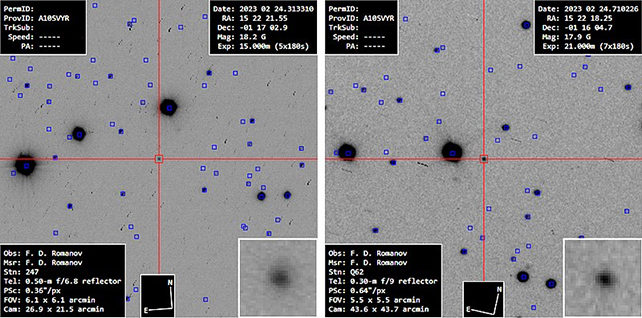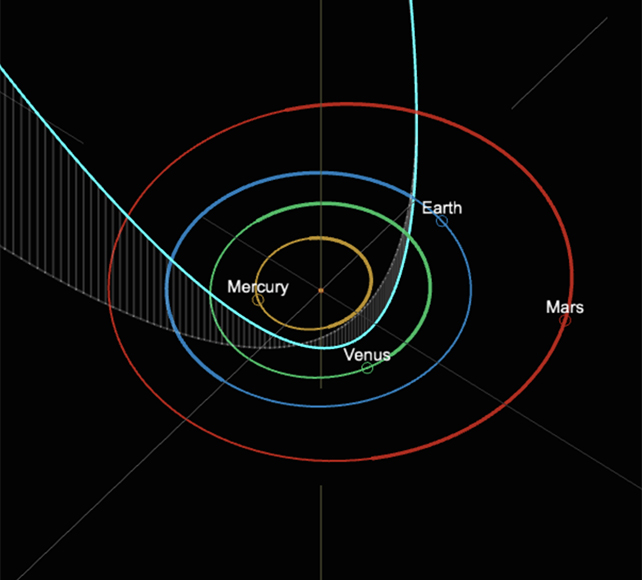
Make a note of the newly discovered comet with the lengthy name of C/2023 A3 (Tsuchinshan-ATLAS): as it gets closer to the Sun and our planet, it could shine brighter in Earth's night sky than many stars.
The comet's nearest approach to the Sun, or perihelion, won't be until September 28, 2024, before hitting its closest point to Earth a few weeks later on October 13, so you've got plenty of time to get your blanket and telescopes organized.
Though estimates are extremely tentative, astronomers are predicting a brightness of magnitude 0.7 at the comet's perihelion. Keeping in mind numbers lower on the magnitude scale represent brighter objects, with Betelgeuse in the Orion constellation at around 0.42, and Antares – the brightest star in the constellation Scorpio – a little dimmer at a touch over 1.
At its closest point to Earth, the comet's magnitude could reach an even more dazzling -0.2, which would make it one of the brightest objects in the night sky. Add in the effects of forward scattering, where the dust and ice of the comet reflects the light from the Sun, and we might even reach a -5 magnitude.
Unless its rendezvous with a star doesn't rip it to shreds before it swings back out on its way into the outer Solar System, that is.

It's also worth bearing in mind that comet brightness is more diffuse than star brightness, as we're talking about a moving object with (potentially) a tail, rather than a single source of illumination.
The best moments to view C/2023 A3 should be in the days before or after October 13. It'll appear in the dawn sky near the constellations Hydra and Crater, though be warned, getting a good view in the glare of the sunrise might prove tricky.
Astronomers first spotted C/2023 A3 on January 9, 2023, from the Purple Mountain Observatory in China. It was then thought to be lost before being picked up again by the team at the Asteroid Terrestrial-impact Last Alert System (ATLAS) telescope in South Africa, on February 22, 2023.
As a result, it gets both institute names in its own name ("tsuchinshan" is Mandarin for "purple mountain"). The C is used for comets on an open trajectory (likely to escape the Sun's orbit), 2023 is the discovery year, and A3 shows this was the third discovery in the first half of January (B is the second half of January, C the first half of February, and so on).

Besides its notable brightness, C/2023 A3 is traveling particularly fast: about 180,610 miles or 290,664 kilometers per hour, zooming along on an extended lap of the Solar System calculated to take approximately 80,660 years. Right now, it's somewhere between the orbits of Saturn and Jupiter.
Stargazers should start to get good sightings of the comet in June 2024, though there's a lot of (educated) guesswork involved here: these celestial objects can be unpredictable in the way their paths develop, and scientists know little about this comet's properties.
While the chances are good that we'll see C/2023 A3 shining bright in the sky next year, there's not much in the way of comparable comet data to base calculations on. As such, astronomers can't even say with certainty if the poor old ball of rock and ice will stay intact long enough to make its appointment with the Sun.
Despite the uncertainty, it's an exciting prospect for astronomers, and we're likely to hear a lot more about C/2023 A3 over the months ahead.





No comments:
Post a Comment